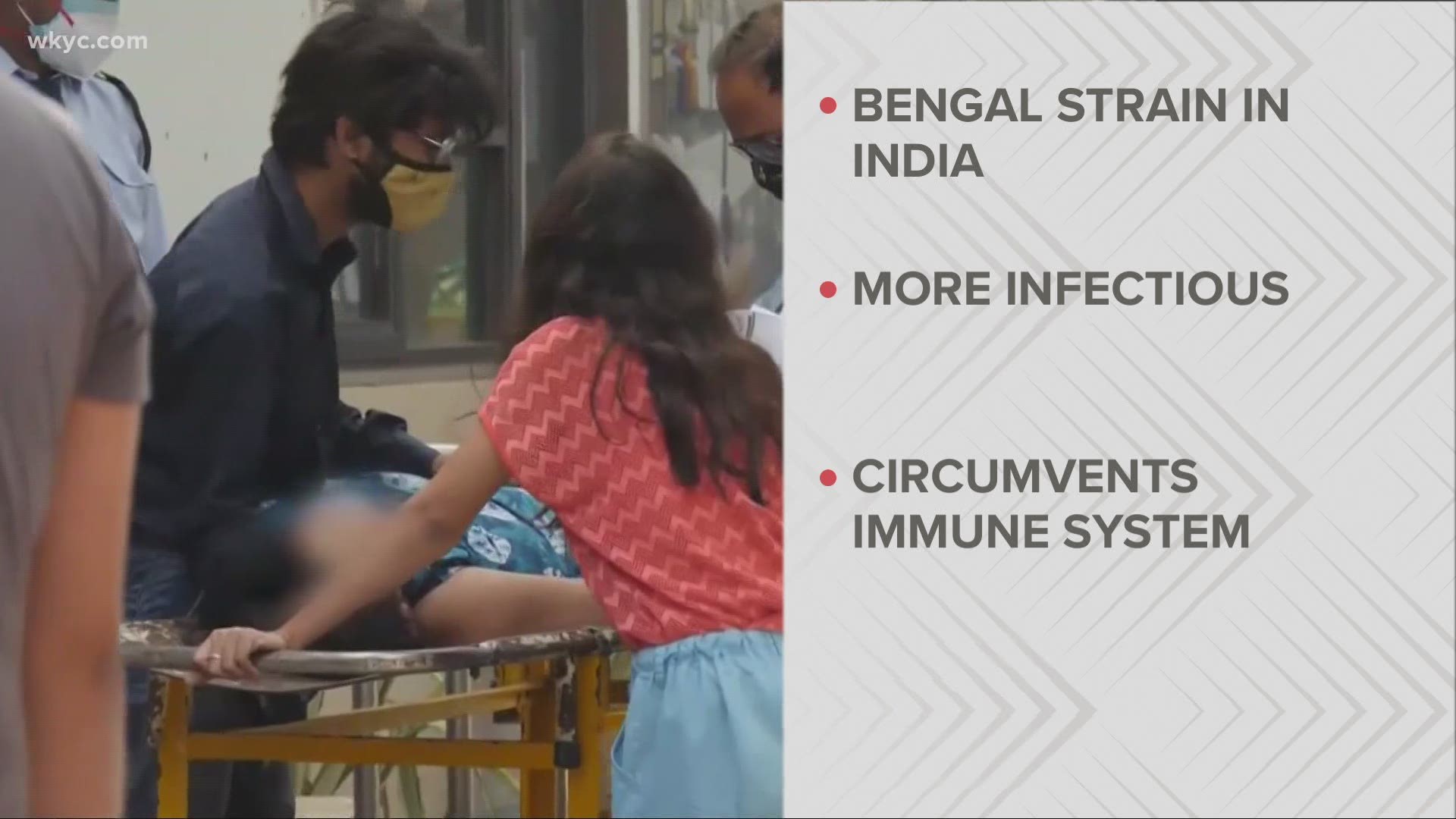CLEVELAND — New research from the Cleveland Clinic and Case Western Reserve University shows that COVID-19 variants discovered in Northeast Ohio during the early stages of the pandemic were less severe than original strains of the virus.
While newer strains and mutations of SARS-CoV-2 are often more contagious than the original COVID-19 strain, they may also be responsible for fewer hospitalizations and deaths.
Scientists from both Northeast Ohio institutions tracked genome sequences for SARS-CoV-2 between March 11-April 22, 2020, recently found that clades, which are subgroups of an initial strain, were associated with a higher mortality rate than those of newer origin.
This group of researchers, led by Dr. Frank Esper, a pediatric infectious disease physician at Cleveland Clinic Children’s, also included scientists who study cancer genomics, computer and data sciences, neurology and pathology, including Dr. Brian Rubin, chair of Cleveland Clinic’s Robert J. Tomsich Pathology and Laboratory Medicine Institute, and Jing Li, Ph.D., the Leonard Case Jr. Professor in Case Western Reserve University’s Department of Computer and Data Sciences.
“This study offers a detailed description of how the different COVID-19 clades evolved and competed once they were brought to Cleveland,” said Dr. Rubin. “The linkage of viral clades to outcomes is quite important and highlights the importance of viral genome sequencing to gain a deeper understanding of new diseases.”
The team analyzed RNA sequences from the bloodwork of more than 302 patients who contracted COVID-19 in Northeast Ohio within the first month of the pandemic.
Results from the research also showed that during the first six weeks of the pandemic's first wave, early strains contributed to the most hospitalizations and deaths, but mutations of the original strains quickly surpassed the original strain because they were more transmissible, but less severe.
“These findings offer greater insight into how COVID-19 infections significantly outpaced the rates of COVID-19 hospitalizations and deaths as the pandemic progressed,” said Dr. Esper. “The research also helps to validate how viral clades can play an important role in predicting patient outcomes.”
Li added, “This study further confirms the importance of studying genomic variants of the virus throughout the pandemic. It also clearly demonstrates the value of team science—a highly integrated and interactive team with different strengths and expertise but a shared vision—in addressing the challenge.”
The scientists say that Americans should continue to wear masks and social distance until herd immunity from the virus is reached thanks to rising vaccination rates.
According to the U.S. Centers for Disease Control and Prevention, roughly 52 percent of Americans have received at least one dose of the COVID-19 vaccine, and just about one-third are fully protected.
Editor's note: The video in the player below is from a previously published story.

